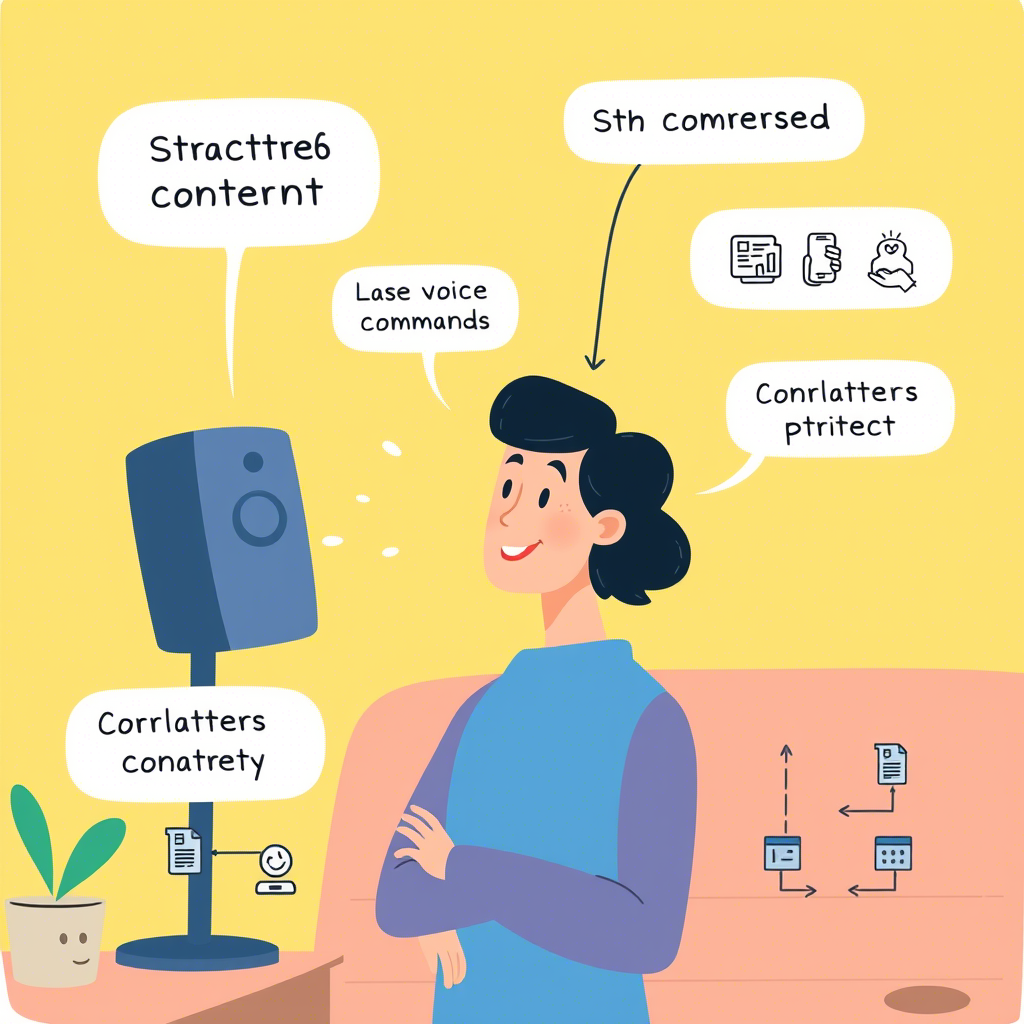Imagine a world where your content is not just read but spoken aloud by voice assistants like Alexa or Google Assistant. This futuristic concept is no longer science fiction—it’s reality.
With the rise of smart speakers, mobile apps, and IoT devices, optimizing content for voice search has become essential for businesses, bloggers, and content creators alike. In this article, we’ll explore how you can structure your content to align with the unique demands of voice-based technology.
By understanding key principles, such as conversational tone, concise phrasing, and actionable tips, you’ll be able to create engaging material that resonates with users in a whole new way. Whether you’re targeting Alexa skills, Google Actions, or general voice searches, this guide will equip you with the tools needed to succeed.
Understanding Voice Search Behavior
To effectively structure content for voice assistants, it’s crucial to first understand how people interact with them. Unlike typing queries into a search bar, voice searches tend to mimic natural speech patterns. For instance, instead of asking “weather forecast today,” someone might say, “Hey Google, what’s the weather going to be like today?” Notice the conversational tone? That’s exactly what you need to replicate in your content.
Voice assistants prioritize quick, direct answers because users often seek immediate information. Think about common scenarios: checking traffic updates while driving, finding recipes hands-free in the kitchen, or setting reminders during busy mornings. These use cases highlight the importance of crafting content that anticipates user intent and delivers value swiftly.
Here’s an example: If someone asks, “What are some healthy breakfast ideas?” A well-structured response would list three to five options clearly, using short sentences and bullet points if possible. Such clarity ensures that both the listener and the assistant process the information efficiently.
Optimizing for Conversational Tone
One of the most significant differences between written and voice-optimized content lies in its tone. Written text tends to follow formal structures, whereas voice-driven content thrives on informality. To achieve this, consider these strategies:
Use Simple Language : Avoid complex jargon unless absolutely necessary. Instead, opt for straightforward vocabulary that mirrors everyday conversations.
Ask Questions Naturally : Frame questions as though you’re speaking directly to the user. For example, instead of writing, “The benefits of meditation include stress reduction,” try, “Did you know meditating regularly can reduce stress?”
Include Callouts : Highlight important phrases or steps within your content. For instance, when explaining a recipe, emphasize ingredients or cooking times so they stand out audibly.
By adopting a conversational tone, you make your content more relatable and easier to comprehend through voice playback. Remember, the goal isn’t just to inform but also to engage listeners emotionally and intellectually.
Prioritizing Conciseness and Clarity
Time is of the essence when dealing with voice interactions. Users expect succinct responses that get straight to the point. Here’s how you can ensure your content meets this expectation:
Keep Sentences Short : Break down long paragraphs into bite-sized chunks. Each sentence should ideally convey one idea at a time.
Focus on Keywords : Identify the primary keywords associated with your topic and integrate them naturally throughout your content. For example, if discussing travel tips, sprinkle terms like “packing checklist” or “best destinations” strategically.
Leverage Bullet Points : Lists are particularly effective for voice optimization since they allow assistants to deliver information incrementally. Consider turning procedural instructions into numbered lists or categorizing related items under headings.
Let’s illustrate this with an example. Suppose you’re creating content around fitness routines. Rather than describing each exercise in detail, present a summary like this:
- Warm up for 5 minutes.
- Perform squats for 10 reps.
- Follow with push-ups for another set of 10.
This format makes it simple for voice assistants to articulate the steps clearly without overwhelming the listener.
Designing Interactive Experiences
Beyond static content, interactive experiences elevate engagement levels significantly. Platforms like Alexa Skills and Google Actions enable developers to craft dynamic, two-way dialogues. Here’s how you can design such interactions:
Anticipate User Intent : Map out potential queries or commands users may issue. Then, prepare tailored responses accordingly. For example, if developing a trivia skill, account for variations like “Next question,” “Repeat answer,” or “Scoreboard.”
Provide Multiple Choice Options : When applicable, offer choices to guide users along their journey. Say, “Would you prefer a vegetarian meal plan or something meat-based?”
Incorporate Personalization : Tailor suggestions based on previous interactions or preferences. For instance, “Since you enjoyed our last smoothie recipe, here’s another one featuring mango!”
Interactive elements foster deeper connections between users and your content, encouraging repeat usage and loyalty.
Measuring Success and Iterating
Creating compelling voice-optimized content doesn’t stop after publication; continuous evaluation and refinement are vital. Track metrics such as session length, drop-off rates, and user satisfaction scores to gauge effectiveness. Additionally, solicit feedback from real users to identify areas for improvement.
For instance, if analytics reveal high abandonment rates midway through a skill, reassess the flow of your conversation. Perhaps certain sections require simplification or reordering. Similarly, positive reviews could indicate which aspects resonate best, allowing you to double down on those strengths.
Remember, success in voice content hinges on adaptability. Stay updated with emerging trends and technologies to keep your strategies sharp and relevant.
Conclusion
Structuring content for voice assistants opens up exciting opportunities to connect with audiences in innovative ways. From embracing conversational tones to prioritizing brevity and interactivity, every element plays a role in enhancing user experience. As you implement these techniques, remember to remain focused on delivering genuine value—whether it’s answering queries promptly, guiding users step-by-step, or entertaining them creatively.
So, why not take the plunge? Experiment with voice-centric approaches today and witness firsthand the transformative impact they have on your audience engagement. And don’t forget to share your thoughts below! How do you envision integrating voice optimization into your own projects? Let’s spark a conversation together.




